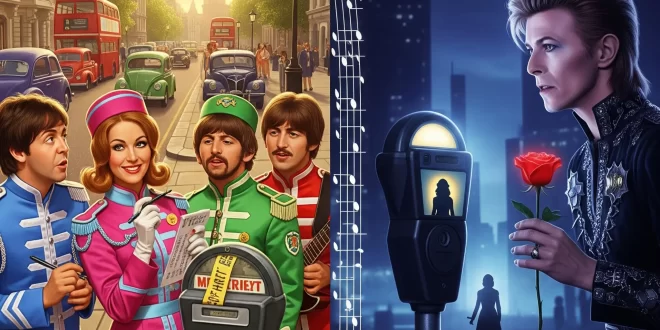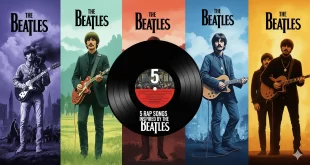In today’s music world, musicians seem as common as grains of sand—everywhere you look, producers, singers, and songwriters abound. Yet, true stars rise by possessing something uniquely their own—an elusive mix of talent, luck, and originality. Few embodied this better than David Bowie, an artist whose ethereal, otherworldly presence and ever-evolving sound defied easy categorization.
David Bowie: The Ever-Changing Starman
Bowie was a musical chameleon whose career spanned decades and genres, shaping and reshaping his image with daring creativity. His innovative style, combined with charismatic songwriting, established him as one of rock’s most revolutionary figures. However, Bowie’s genius was not developed in isolation; like many great artists, he drew inspiration from the creative currents around him.
The Beatles’ Enduring Influence on British Music Icons
The Beatles’ imprint on British music from the 1960s onward is undeniable. From singers and guitarists to producers, nearly every musician of that era was touched by the Fab Four’s groundbreaking work. Although Bowie seldom openly praised The Beatles during their peak, their music undeniably influenced his artistic development, particularly their legendary 1967 album Sgt. Pepper’s Lonely Hearts Club Band.
Sgt. Pepper: A Blueprint for Innovation
Widely regarded as one of the greatest albums ever made—and Paul McCartney’s personal favorite—Sgt. Pepper broke new ground with its conceptual storytelling and bold experimentation. It demonstrated that pop and rock could transcend formulaic patterns and venture into the daring and unusual.
For Bowie, Sgt. Pepper wasn’t just an album; it was a creative manifesto. Among its tracks, one stood out: “Lovely Rita.”
The Story Behind ‘Lovely Rita’
“Lovely Rita” was inspired by a real-life meter maid, a relatively new figure in 1967 Britain. Paul McCartney explained, “There was a story in the paper about ‘Lovely Rita’, the meter maid. She’s just retired as a traffic warden. The phrase ‘meter maid’ was so American that it appealed to me, and to me, a ‘maid’ was always a little sexy thing: ‘Meter maid. Hey, come and check my meter, baby.’ I saw a bit of that, and then I saw that she looked like a ‘military man.’”
Although John Lennon reportedly counted it among his least favorite Beatles songs, “Lovely Rita” captivated fellow musicians—including Pink Floyd and, notably, David Bowie.
Bowie’s Nod to ‘Lovely Rita’ in His Own Work
According to The Complete David Bowie New Edition: Expanded and Updated, Bowie borrowed the backing vocal style from “Lovely Rita” for his track “Star,” featured on his acclaimed album The Rise and Fall of Ziggy Stardust and the Spiders from Mars. The vocal similarities between the two songs are striking, showing Bowie’s subtle homage to the Fab Four.
“Star” is a high-energy track that deepens the concept of Ziggy Stardust, portraying Bowie’s alter ego as a cosmic messenger of youthful empowerment. Bowie described the song as an expression of his personal struggles with relationships and emotional connection, wrapped in theatrical glam rock flair.
Bowie’s Artistic Philosophy: A Blend of Inspiration and Innovation
Bowie openly acknowledged his practice of learning from other artists. “I have to interplay with other writers, because I’ve always been a fan,” he said. “If I wasn’t a fan, I’d probably be far more individual—the other kind of individuality where it’s very, very ingrained in the self. Because I’m very involved with society on my level, I have to use the tools that the present society has been created with, musically. That’s why, I lift from—and use—and am intrigued by—other writers and their music.”
This approach helped Bowie create a rich, multifaceted legacy that drew from the past while forging bold new directions.






